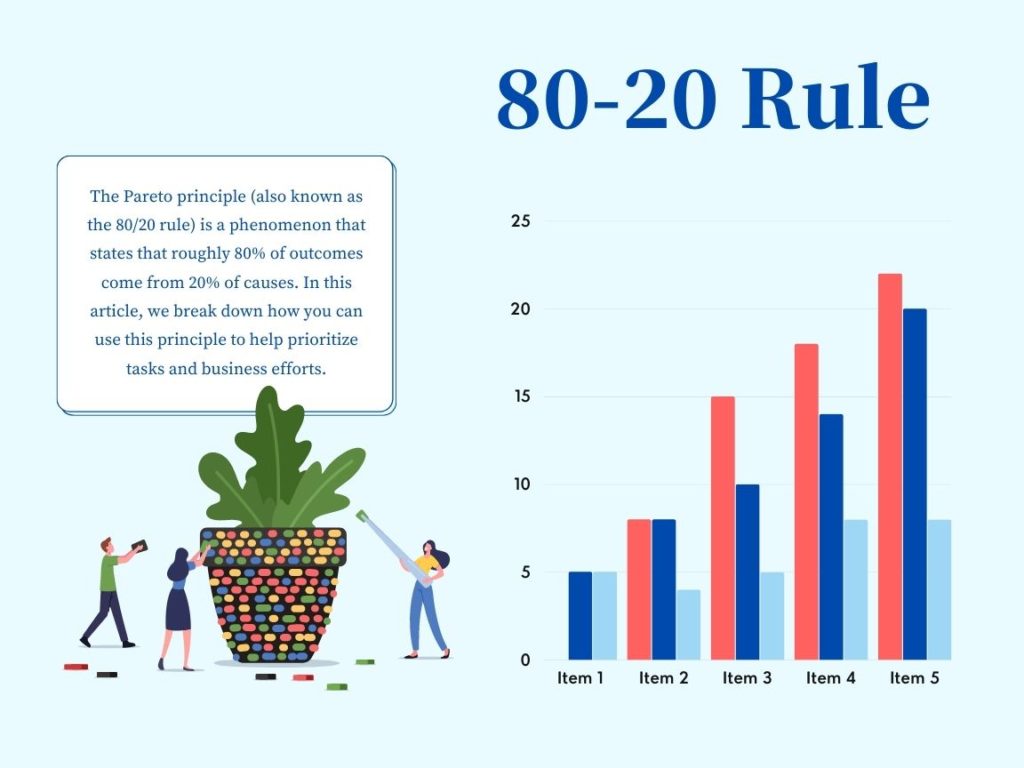11 Proven Time Management Strategies for Solo Business Owners
Introduction
Starting a solo business is a path paved with rewarding opportunities as well as challenging tasks. One of the most significant hurdles that solo business owners often face is managing their time efficiently.
With countless responsibilities and limited hours in the day, juggling multiple tasks can quickly become overwhelming. But fear not, mastering the art of time management is an achievable goal.
This article delves into eleven essential time management strategies tailored specifically for solo business owners.
Whether you’re still holding a full-time job while nurturing your entrepreneurial dreams or have already dived headfirst into your venture, these strategies aim to help you maximize productivity and attain your business objectives without compromising your work-life balance.

1. Identify high-impact tasks
The first step towards effective time management as a solo business owner involves identifying high-impact tasks.
High-impact tasks are those that make a significant contribution to your business growth or goals.
Perhaps it’s strategizing and implementing effective marketing campaigns, improving your product or service, or networking to secure new clients. The key is to recognize these tasks amidst the whirlwind of daily operations.
Once you have a clear understanding of these tasks, make sure they are at the forefront of your to-do list.
Prioritizing these tasks will ensure your efforts and time are channeled toward achieving tangible business results.
2. Organize, Prioritize, and Cluster
Time management is more than just ticking off items from a to-do list; it’s about organizing your tasks efficiently, prioritizing them based on their impact and urgency, and clustering related tasks together.
Developing a systematic approach to handling your tasks can drastically improve productivity and reduce unnecessary stress. Digital tools and apps can be incredibly helpful in this regard, providing you with a platform to organize your tasks, set reminders, and keep track of deadlines.
Clustering tasks can also enhance efficiency. Grouping similar tasks together allows you to maintain a consistent workflow and reduces the time spent switching between different types of work.

3. Avoid Multitasking
Multitasking may seem like an effective way to get more done in less time.
However, research suggests otherwise. Juggling multiple tasks at once can lead to decreased productivity and errors due to divided attention. The human brain is not designed to handle multiple tasks efficiently simultaneously.
It’s better to focus on one task at a time and then move on to the next.
This approach not only ensures high-quality work but also allows for deep work – a state of focused concentration that can dramatically boost productivity.
4. Use the 80/20 Rule
The 80/20 rule, also known as the Pareto Principle, is a timeless time management technique that solo business owners can use to their advantage. The principle posits that 80% of your results come from 20% of your efforts.
Applying this principle to your business means identifying the tasks that yield the most significant results and focusing on them.
It’s about working smarter, not harder.
You might find that a select few of your products drive most of your sales or a handful of clients contribute to the bulk of your revenue.
Concentrating on these high-value areas can lead to increased productivity and business growth.

5. Try the “Pomodoro Technique”
If you’re struggling to maintain focus or feel overwhelmed, the Pomodoro Technique can be useful. This technique encourages you to break your work down into manageable 25-minute intervals, separated by short breaks. Each 25-minute work period is known as a “Pomodoro”.
After completing four Pomodoros, take a longer break to recharge. This method not only helps maintain focus but also instills a sense of urgency, making you more likely to complete tasks more efficiently.
If you’re interested in more techniques like the Pomodoro Technique, consider checking out various time management courses available online.
6. Decrease Distractions
In the digital era, distractions are everywhere. From emails and social media notifications to unexpected calls and meetings, these distractions can easily eat up your valuable time. It’s crucial to create an environment conducive to concentration and productivity.
This might involve turning off notifications during work periods, setting specific times to check emails, or communicating your availability to colleagues and clients.
If you are less distracted, you will be more productive.

7. Figure Out How Much Time You Are Currently Spending
Understanding how you currently spend your time can shed light on potential areas for improvement. Consider tracking your activities for a few days to gain insight into where your time is going.
You might be surprised at how much time certain tasks take or how often you are interrupted. With this information, you can make informed decisions about what tasks to delegate, outsource, or eliminate altogether.
This step is crucial for effective time management and can help you reallocate your time towards more high-impact tasks.

8. Identify and Eliminate Your Time Wasters
Every business owner has different time wasters. For some, it may be unproductive meetings; for others, it could be excessively checking emails or social media. Identifying and eliminating these time wasters is crucial for effective time management.
Consider setting specific times for checking emails or limiting meetings to essential discussions only. Additionally, there are many ways to avoid common time wasters, which are elaborated upon in this helpful article.
Avoiding time wasters is crucial for solo entrepreneurs. Read more about it here.
9. Know How to Balance Your Time
It’s easy to become too focused on your business and forget about your spare time.
But remember, a healthy work-life balance is vital for long-term success.
Be sure to allocate specific time for each of these areas. All work and no play can lead to burnout, which is detrimental to your productivity and overall well-being.

10. Automate as Much as Possible
In the digital age, there’s an array of tools available to automate repetitive tasks. Automation can be a time-saver and a productivity booster. From scheduling social media posts and sending out emails to managing your finances and customer service, automation can significantly reduce your workload.
This saved time can then be invested into high-impact tasks that drive business growth. Furthermore, automation can also help reduce errors, ensuring a smoother and more efficient operation.
11. Give Yourself a Break
It’s important to remember that breaks are not a waste of time, but a crucial part of time management. Regular breaks can prevent burnout, improve mental agility, and enhance overall productivity.
Whether it’s a quick walk, a healthy snack, or a few minutes of meditation, breaks can provide you with the mental rest needed to maintain high levels of productivity.
The Pomodoro Technique, mentioned earlier, incorporates regular breaks into its methodology, affirming the importance of rest periods in effective time management.

Final Thoughts
Managing time effectively is an ongoing process and a critical success factor for any solo business owner.
The strategies mentioned in this article can act as a starting point, providing you with a foundation for developing your own personalized time management system.
By applying these strategies, you’ll be well on your way to maximizing productivity and striking a healthy work-life balance.
Remember, the goal is to be productive, not busy. Adopt a proactive approach towards managing your time, continuously fine-tune your strategies, and watch your business thrive.
Frequently Asked Questions
How can a business owner manage time better?
Business owners can manage their time better by identifying high-impact tasks, organizing, prioritizing and clustering tasks, avoiding multitasking, and using techniques like the 80/20 rule and the Pomodoro Technique. Decreasing distractions, understanding current time usage, eliminating time wasters, balancing time, automating tasks, and giving themselves breaks are also critical. Utilizing digital tools for scheduling and task management can further optimize time usage.
How do I schedule my day when I own a small business?
Begin by listing out all tasks that need to be accomplished, identify high-impact tasks, and prioritize them. Allocate specific time slots for each task based on their urgency and importance. Use tools to automate and organize tasks where possible. Schedule breaks between tasks to avoid burnout and maintain productivity levels. It’s also beneficial to allocate time for unexpected issues or tasks that may arise during the day.
What are 5 time management strategies?
Five time management strategies include: identifying high-impact tasks, using the 80/20 rule (Pareto Principle), trying the Pomodoro Technique, decreasing distractions, and automating as much as possible.
What are the 4 P’s of time management?
The 4 P’s of time management are Planning, Prioritizing, Performing, and Procrastinating (avoidance). Planning involves setting goals and scheduling tasks, Prioritizing means selecting which tasks should be completed first, Performing involves executing the tasks, and Procrastinating refers to avoiding delays in accomplishing tasks.
How do successful individuals manage time?
Successful individuals often set clear goals, prioritize tasks based on importance and urgency, delegate tasks when possible, use time management techniques such as the Pomodoro Technique or the 80/20 rule, and take regular breaks to recharge. They often avoid multitasking, keep distractions at bay, and continuously monitor and optimize their time usage.
How do you survive hard times in business?
Surviving hard times in business requires a combination of resilience, adaptability, and strategic thinking. This might involve cutting costs, identifying new market opportunities, improving products or services based on customer feedback, and seeking professional advice or assistance. It’s also crucial to maintain a positive mindset and focus on long-term goals.
What are the 4 D’s of prioritization?
The 4 D’s of prioritization are Delete, Delegate, Defer, and Do. Delete involves eliminating unnecessary tasks. Delegate refers to assigning tasks to others where possible. Defer means postponing tasks that are not currently urgent or important. Do is about executing tasks that are both urgent and important.
What are the 3 main elements of time management?
The three main elements of time management are Prioritization, Scheduling, and Execution. Prioritization involves deciding which tasks are most important, Scheduling involves allocating time to complete these tasks, and Execution is the act of performing the tasks.
What are 6 time management strategies?
Six time management strategies include the Pomodoro Technique, the 80/20 rule, decreasing distractions, automation, prioritizing tasks, and identifying high-impact tasks.
How can businesses improve productivity and time management?
Businesses can improve productivity and time management by setting clear goals, prioritizing high-impact tasks, avoiding multitasking, using time management techniques, reducing distractions, and automating tasks wherever possible. Regularly tracking and reviewing time usage can also highlight potential areas for improvement.
How can you improve your own productivity and time management?
Improving your own productivity and time management involves setting clear and achievable goals, prioritizing tasks, utilizing time management techniques, decreasing distractions, taking regular breaks, and using digital tools to organize and automate tasks. Regular self-assessment and adjustment of your strategies can
also enhance productivity.
Why is time management important for business owners?
Time management is crucial for business owners because it directly impacts productivity and efficiency. Effective time management allows business owners to achieve more in less time, reduces stress, and helps maintain a healthy work-life balance. It’s key for long-term business success and sustainability.
How do you manage self-management time?
Self-management time can be managed by setting clear personal and professional goals, prioritizing tasks, decreasing distractions, taking regular breaks, and using time management techniques and digital tools. It’s also important to maintain a healthy work-life balance and ensure time for relaxation and recreation.
What are the 6 suggestions to improve your time work management?
The six suggestions to improve your time work management are identifying high-impact tasks, organizing and prioritizing tasks, decreasing distractions, using time management techniques such as the 80/20 rule or the Pomodoro Technique, automating tasks, and taking regular breaks.
What are the 8 time management skills?
The eight time management skills are goal setting, prioritization, scheduling, delegation, focusing, reducing distractions, use of time management tools and techniques, and regular self-assessment of time usage.
Which three techniques will you use for time management?
The three techniques you can use for time management are the Pomodoro Technique, the 80/20 rule, and task batching or clustering. These techniques can help in improving productivity, maintaining focus, and reducing distractions.








2 Comments
Comments are closed.